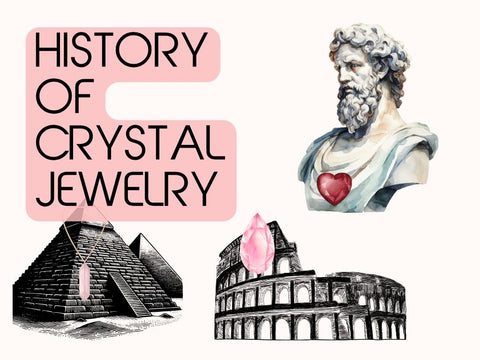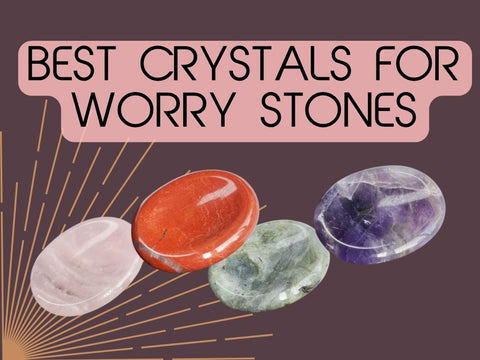Long before crystal jewelry became popular, our ancestors knew its deep value. The sacred earth treasures have a long history. They show a deep bond between humans and nature's stones.
In ancient Egypt, pharaohs wore lapis lazuli for protection. Greek warriors used amethyst for clear thinking in battle. Chinese emperors prized jade for its symbol of immortality. These stories highlight how crystals were seen as more than just pretty things.
These old cultures believed crystals connected our world to the spiritual. The crystal symbolism throughout history shows a common truth. Humans have always looked for a deeper connection. Today, we carry on this tradition, learning from the wisdom of the past.
Key Takeaways
- Ancient civilizations used crystal jewelry for spiritual protection and healing purposes
- Egyptian, Greek, and Chinese cultures each developed unique crystal traditions and meanings
- Crystals served as symbolic bridges between physical and spiritual realms across cultures
- Modern crystal jewelry practices are rooted in thousands of years of ancient wisdom
- Different civilizations attributed specific powers to particular crystal types
- Crystal symbolism has remained remarkably consistent across diverse ancient cultures
The History of Crystal Jewelry Across Ancient Civilizations
Ancient cultures worldwide found ways to use crystal energy in jewelry and sacred items. They saw crystals as more than just pretty stones. Archaeology shows us how they used ancient crystal adornments in their daily lives and spiritual practices.
Each culture brought its own twist to working with crystals. They made everything from protective charms to royal crowns. Today, their traditional crystal craftsmanship inspires both jewelry makers and those seeking spiritual growth.
Egyptian Crystal Mastery and Sacred Amulets
In Egypt, skilled artisans made crystal amulets to help souls in the afterlife. They thought certain stones could ward off bad energy and guide souls to the next world. Lapis lazuli was seen as heavenly, while carnelian was a symbol of life and energy.
The famous mask of Tutankhamun is a prime example of Egyptian skill. It's adorned with turquoise, obsidian, and quartz, chosen for their protective powers. These pieces were more than just decorations; they were tools for spiritual growth.
Egyptian priests knew a lot about crystals. They believed each stone had its own energy. This knowledge helped start the crystal healing we know today.
Mesopotamian and Persian Crystal Traditions
In Mesopotamia, people made antique gemstone jewelry that showed their grasp of the universe. Kings wore crystal crowns to show their divine connection. Lapis lazuli was a stone of divine favor and wisdom.
Persian craftsmen were known for their skill in cutting and polishing stones. They made detailed patterns that highlighted each stone's unique qualities. Warriors wore carnelian for courage, and merchants chose jade for luck.
These ancient people traded crystals across vast distances. The Silk Road was a key route for this trade. It helped spread knowledge of crystal healing far and wide.
Greek and Roman Precious Stone Adornments
Greeks and Romans took crystal jewelry to new heights with their traditional crystal craftsmanship. Romans wore amethyst to stay sober, and Greeks used hematite for strength.
These cultures combined beauty with spiritual purpose in their antique gemstone jewelry. They made cameos and intaglios that told stories and offered protection. Romans loved emeralds for their link to Venus and love.
Studies of ancient artifacts show their deep understanding of crystals. They classified stones by color, hardness, and spiritual value. This knowledge shaped modern gemology and crystal healing.
Cultural Significance and Symbolic Power of Ancient Crystal Adornments
The cultural significance of crystals goes beyond their beauty. Ancient societies saw them as sacred tools. They believed these stones connected humans with divine energy.
Crystals were used for protection, healing, and as symbols of power. People understood the natural energies of these stones. They knew how these energies affected human well-being.
Religious and Spiritual Meanings in Crystal Selection
Religious leaders chose crystals with great care. They knew each stone had unique powers. Amethyst helped with meditation, while carnelian gave courage.
Historical crystal healing was based on color and energy. Priests studied these to find spiritual uses. They thought crystals could send divine messages.
Temple ceremonies used crystals to boost spiritual energy. These rituals helped with worship, healing, and growth.
Royal Crystal Ornaments and Status Symbols
Royal crystal ornaments were more than symbols of wealth. They helped rulers connect with their duties. These adornments showed their sacred role.
Crown jewels had crystals for wisdom and protection. Kings and queens chose stones for their needs. Sapphires meant divine favor, and emeralds prosperity.
The way crystals were placed on royal regalia was traditional. Each spot had a special meaning for the ruler's power.
Traditional Crystal Craftsmanship and Healing Beliefs
Ancient craftsmen made crystal jewelry with care. They believed their intentions and spiritual state mattered. This influenced the jewelry's energy.
Vintage crystal amulets were made with special care. Jewelers combined skill and spiritual knowledge. They worked during certain times to boost the crystal's energy.
| Crystal Type | Primary Purpose | Cultural Application | Spiritual Benefit |
|---|---|---|---|
| Amethyst | Spiritual clarity | Temple meditation | Enhanced intuition |
| Carnelian | Courage and protection | Warrior amulets | Increased confidence |
| Sapphire | Divine wisdom | Royal crowns | Clear judgment |
| Emerald | Growth and prosperity | Fertility ceremonies | Abundance manifestation |
Final Thoughts: The Timeless Power of Crystal Jewelry Across Ages
The ancient traditions of crystal jewelry guide us today. These treasures hold wisdom from long before science could explain them.
Ancient cultures like the Egyptians, Mesopotamians, Greeks, and Romans saw crystals as bridges. They used them as sacred tools for spiritual growth.
Wearing crystal jewelry today links you to a long line of seekers. The amethyst of Roman nobility can bring you clarity. Turquoise, cherished by Egyptian pharaohs, offers protection and healing.
Approach crystals with reverence and understanding. Each piece of jewelry is a personal talisman, carrying wisdom from many generations.
Your journey with crystals connects you to a timeless tradition. It's a path of spiritual growth and self-discovery. Ancestors who made these adornments knew crystals' power in transformation and connecting with nature's mysteries.
FAQ
What is the earliest evidence of crystal jewelry in ancient civilizations?
Crystal jewelry has a long history, dating back over 7,000 years. The first signs of it were found in ancient Mesopotamia. There, the Sumerians made beautiful lapis lazuli and carnelian pieces around 5000 BCE.



